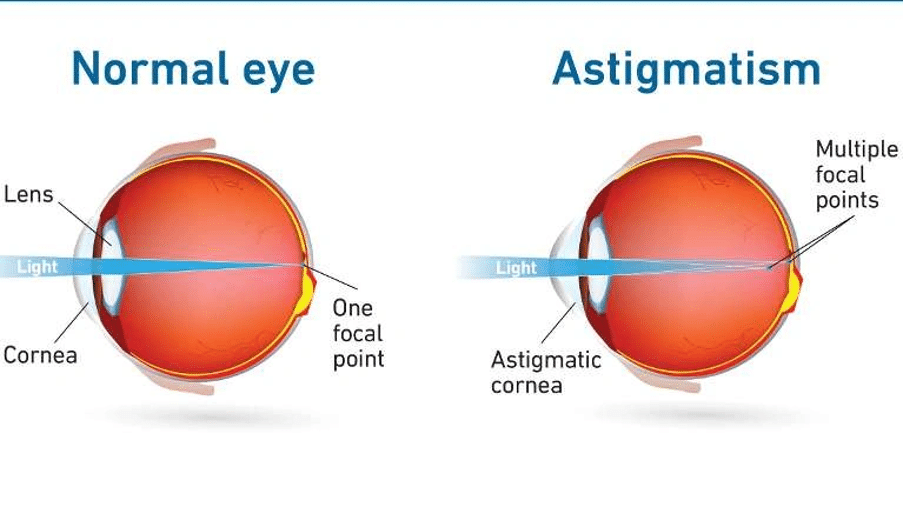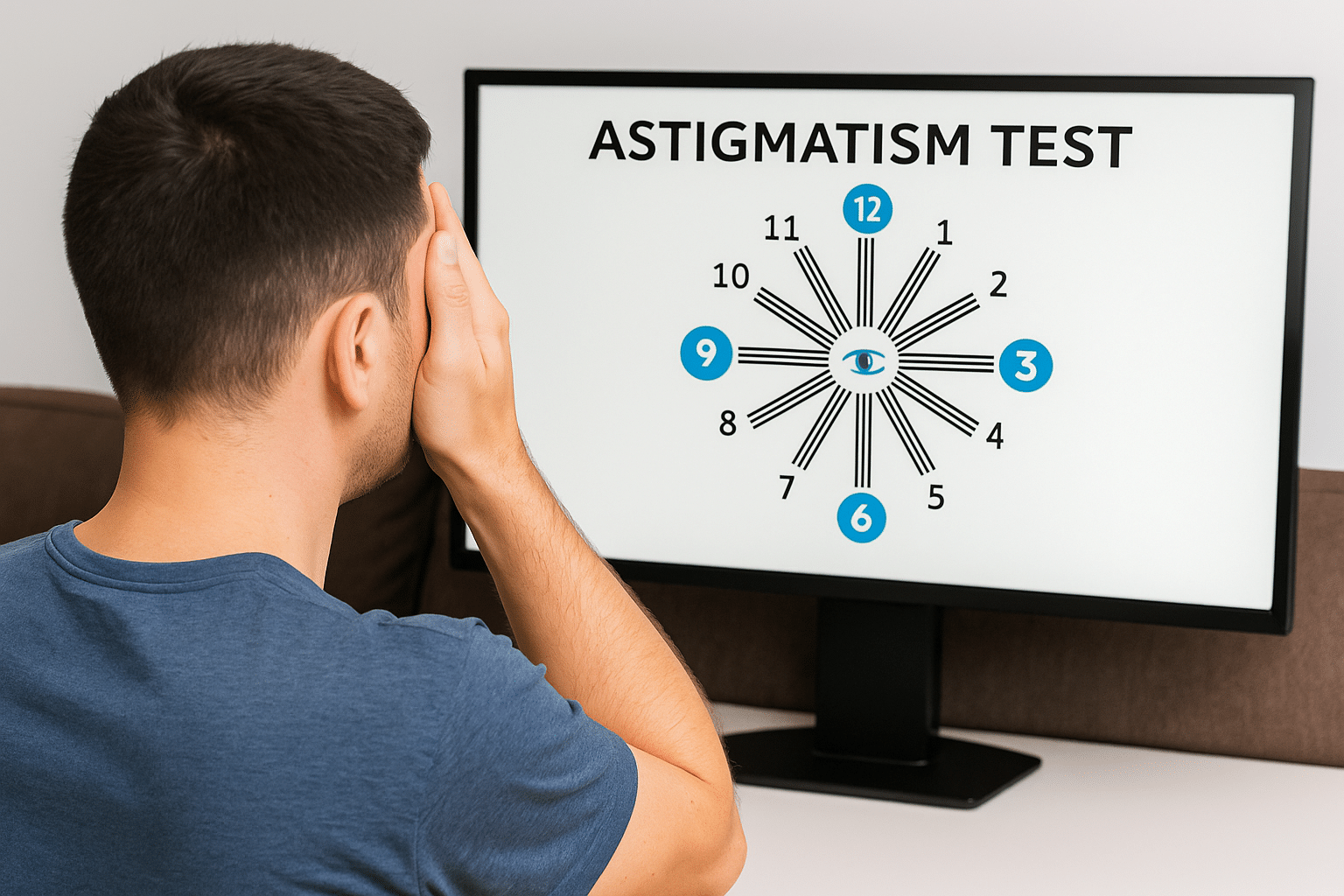Looking to learn about astigmatism eye exercises to solve your vision problems? Astigmatism happens when your cornea or lens has an irregular shape. Your eye’s cornea should be perfectly spherical like a football. Instead, it takes more of an oval shape like a rugby ball, which changes how light hits your retina.
Blurred vision, eyestrain, eye irritation, and frequent headaches might point to astigmatism. The scientific evidence tells us something important: eye exercises can’t cure astigmatism. Some sources claim these exercises lead to major improvements even suggesting results within a day for mild cases. The medical consensus remains clear that eye exercises cannot reshape your cornea or lens.
This piece will help you understand what eye exercises can really do. You’ll learn which exercises might help ease your symptoms and when you need professional help. Let’s look at the facts about managing this common eye condition.
Can astigmatism be cured naturally?
People often wonder if natural remedies can fix their astigmatism. The answer lies in understanding what causes this common condition and the real-life limits of non-medical approaches.
What causes astigmatism in the first place
Your cornea (the clear front portion of your eye) or lens develops an irregular curvature in astigmatism. A normal eye has a perfectly spherical shape like a football. An eye with astigmatism looks more like a rugby ball. Light focuses on multiple points in your eye instead of a single point because of this irregular shape. This creates blurred or distorted vision.

Astigmatism exists from birth in most cases. We inherited it from our parents, and approximately one in three people have some degree of astigmatism. Less common causes include:
- Eye injuries or trauma
- Certain eye surgeries, including cataract procedures
- Eye conditions like keratoconus (progressive thinning of the cornea)
- Corneal scarring from infections or ulcers
Why non-medical fixes are limited
Natural approaches face a basic problem: astigmatism affects your eye’s physical shape. Exercises target muscles but cannot reshape corneal or lens tissue. This means they cannot address the mechanisms. Medical experts confirm that eye exercises cannot cure astigmatism. This reflects the physical reality – muscle movements cannot reshape your cornea or lens. The American Academy of Ophthalmology and Harvard Health Publishing point to the lack of scientific evidence supporting eye exercises as treatment for astigmatism.
The difference between symptom relief and correction
Natural approaches might help manage symptoms even though they cannot cure astigmatism. Eye exercises, proper nutrition, and stress reduction techniques can:
- Reduce eye strain and fatigue
- Ease headaches linked to astigmatism
- Improve overall eye comfort
Notwithstanding that, understanding the difference between managing symptoms and fixing the condition is vital. Natural remedies should work alongside professional medical treatment, not replace it. Using only unproven methods could delay the work to be done and might worsen vision problems. Prescription eyeglasses, contact lenses, or refractive surgery remain the quickest way to correct astigmatism effectively.

What eye exercises can actually do
Eye exercises won’t change your cornea’s shape, but they can help your eyes feel better and stay healthy. Eye exercises may relieve strain, but they don’t cure astigmatism. Let’s look at what these exercises can actually do.
Reducing eye strain and fatigue
Digital eye strain affects countless individuals who spend more than two hours looking at screens each day. Your eyes can feel better with these exercises that:
- Let overworked eye muscles relax after long focus periods
- Help reduce blurred vision, headaches, and sensitivity to light
- Keep your eyes from getting dry by making you blink more often during screen time
These benefits matter a lot since most adults now deal with tired, strained eyes from too much screen time.
Improving focus flexibility
Your eyes must adjust when looking at things at different distances. The right exercises can boost this skill, Near and far focusing exercises teach your eyes to quickly switch focus between objects at different distances. This makes everyday tasks more comfortable and cuts down on eye tiredness. These exercises might also help you put off needing glasses or contacts.
Supporting visual coordination
Good eye coordination helps both eyes work together smoothly. Regular exercise can, Make eye muscles stronger to track objects betterImprove how well your hands and eyes work togetherMake your visual memory sharper. Pencil push-ups work great to treat convergence insufficiency, where eyes can’t focus together on close objects.
Exercises for eyes that help with comfort
Simple exercises can make your eyes feel better:
- Palming lets you cover closed eyes with warm hands. This darkness helps eye muscles relax completely and helps your eyes make more tears to stay moist.
- Moving your eyes in figure eights helps control eye muscles better and gives tired eye muscles a good stretch.
- The 20-20-20 rule works really well—look at something 20 feet away for 20 seconds every 20 minutes. This simple habit helps your eyes feel much better during computer work or reading.
- Eye yoga and gentle massage techniques help your eyes relax, especially after doing detailed work.
Exercises for astigmatism: A closer look
Want to try some astigmatism eye exercises at home? Let’s get into six techniques that could help you deal with eye strain and discomfort. Eye exercises may relieve strain, but they don’t cure astigmatism.
1. Near and far focusing
Focus on your thumb while holding it 10 inches from your face for 15 seconds. Your gaze should then change to an object 10-20 feet away for another 15 seconds. You can improve your focusing flexibility by repeating this exercise 5 times.
2. Palming
Warm your palms by rubbing them together, then cup them gently over your closed eyes without pressure. Take deep breaths and focus on the darkness and warmth for 5-10 minutes. This method helps relieve eye strain and lets you relax.
3. Figure of eight tracing
Pick a point about 10 feet ahead and trace an imaginary figure of eight with your eyes. Keep this up for 30 seconds before switching direction. Your eye muscle’s flexibility and coordination will improve with this exercise.
4. Eye massage
Put two fingers on each eyelid after closing your eyes. Make gentle circular motions with your fingers in both clockwise and anticlockwise directions. Your corneal shape can benefit if you repeat this 10-15 times, 2-4 times daily.
5. Vision breaks
Remember the 20-20-20 rule: look at something 20 feet away for 20 seconds every 20 minutes. This simple practise gives your eyes the rest they need and reduces digital eye strain.
6. Eye yoga
Keep your posture straight while sitting and close your eyes. Focus on your breathing and move your eyeballs slowly from side to side without opening them. This exercise makes your eye muscles stronger and helps you focus better.
When to seek expert help for astigmatism
Eye exercises might give you comfort, but some symptoms indicate you should see an eye care professional.
Signs your condition needs medical attention
You should see an eye doctor right away if you notice:
- Blurred or distorted vision that affects your daily activities
- Ongoing headaches or eye strain
- Problems seeing at night
- Quick changes in vision
- Eye pain or severe headaches with vision changes
Why exercises cannot change the shape of the cornea or lens
Astigmatism comes from your eye’s physical shape—it looks more like a rugby ball than a football. Eye exercises work on muscles but cannot alter the cornea or lens structure. Harvard Health makes it clear that exercises “won’t keep you out of glasses if you need them and won’t change the ultimate course of your astigmatism”.
How to fix astigmatism with clinical solutions
These treatments work well:
- Prescription eyeglasses made specifically for astigmatism
- Contact lenses, including special toric and rigid gas permeable options
- Laser vision correction (LASIK, LASEK, PRK)
- Implantable contact lenses for stronger prescriptions
- Refractive lens exchange, which works like modern cataract surgery
Precision Vision London’s advanced diagnostic tools
Precision Vision London provides proven treatments such as glasses, laser surgery, and ICLs that fix vision safely. Book your consultation today and discover real solutions for clear vision.

Tailored treatment plans from our expert surgeons
Our specialists employ complete eye examinations and advanced corneal topography to create individual-specific treatment plans based on your unique visual needs and lifestyle.
Conclusion
Eye exercises can help with comfort and reduce strain, but they definitely can’t change your cornea’s shape or cure astigmatism. All the same, simple techniques like the 20-20-20 rule, palming, and focus exercises might help you manage symptoms and feel more comfortable daily. Your eye health needs a balanced approach. Exercises may provide short-term relief, but astigmatism ended up needing professional assessment and proven clinical solutions. Your vision impacts every part of your life, so choosing partial solutions might delay the treatment you need.
The physical aspects of astigmatism mean only proper corrective measures can address the condition effectively. These include glasses, specialised contact lenses, or surgical interventions. Each option has unique benefits based on your lifestyle, prescription strength, and priorities. Precision Vision London helps guide you through these options with cutting-edge diagnostic technology and personalised care. Our expert surgeons take time to assess your unique visual needs before suggesting the right treatment path. Many patients see life-changing results after getting proper astigmatism correction designed for their eyes.
Note that your vision deserves exceptional care. Eye exercises can enhance your eye health routine, but only proven clinical treatments will give you the clear, comfortable vision you need. Book a consultation today and find out how our advanced solutions can revolutionise your visual experience in ways exercises alone never could.
FAQs
Q1. Can eye exercises cure astigmatism? No, eye exercises cannot cure astigmatism. While they may help reduce eye strain and fatigue, exercises cannot change the shape of your cornea or lens, which is the underlying cause of astigmatism.
Q2. What are some effective eye exercises for managing astigmatism symptoms? Helpful exercises include near and far focusing, palming, figure-of-eight tracing, eye massage, and following the 20-20-20 rule. These can help reduce eye strain and improve comfort, but won’t correct the astigmatism itself.
Q3. How can I tell if my astigmatism requires medical attention? Seek professional help if you experience persistent blurred vision, frequent headaches, difficulty with night vision, or sudden changes in your eyesight. These symptoms may indicate that your astigmatism needs proper medical assessment and treatment.
Q4. What are the proven clinical treatments for astigmatism? Clinically proven treatments for astigmatism include prescription eyeglasses, specialised contact lenses (such as toric lenses), and surgical options like LASIK, LASEK, or implantable contact lenses. The best option depends on your individual case and lifestyle.
Q5. Is it possible to improve astigmatism naturally without medical intervention? While a healthy lifestyle and certain exercises may help manage symptoms, astigmatism cannot be corrected naturally. The physical shape of the eye causing astigmatism requires proper corrective measures such as glasses, contact lenses, or surgery for meaningful improvement.
Authors & Reviewer
-
 Olivia: Author
Olivia: AuthorHi, I'm Olivia, a passionate writer specialising in eye care, vision health, and the latest advancements in optometry. I strive to craft informative and engaging articles that help readers make informed decisions about their eye health. With a keen eye for detail and a commitment to delivering accurate, research-backed content, I aim to educate and inspire through every piece I write.
-
 Dr. CT Pillai: Reviewer
Dr. CT Pillai: ReviewerDr. CT Pillai is a globally recognised ophthalmologist with over 30 years of experience, specialising in refractive surgery and general ophthalmology. Renowned for performing over 50,000 successful laser procedures.

